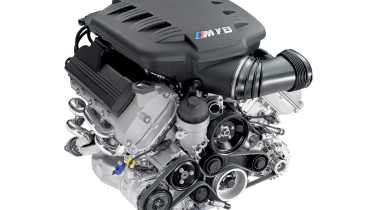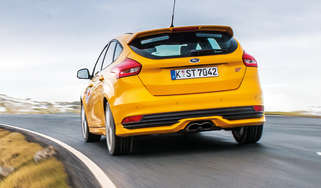BMW M3: V8 engine technology
The new BMW M3’s 414bhp V8, and how it rates against its rivals from Audi and Mercedes
If headline power figures float your boat, the 4-litre V8 tucked under the subtly bulging bonnet of the new BMW M3 might well register a flicker of disappointment. It has 414bhp, exactly the same as its arch rival, the Audi RS4, a car launched back in 2005. And when Mercedes joins the fray next year with the C63 AMG, the M3 could well find itself lagging behind by a breezy 86bhp.
It all depends on whether Mercedes decides to go with the ‘cooking’ 475bhp version of the 6.2-litre AMG V8, as fitted to the regular CLK63 AMG, or the 500bhp edition unveiled at last month’s New York motor show as the powerplant for the Black Series CLK63. Either way, AMG will top the firepower chart by a substantial margin – its customary position these days.
Probe deeper, though, and the M3’s new motor begins to look a whole lot more like the high-achiever we were expecting. Whereas the 4.2-litre Audi V8 relies on FSI direct injection technology and 7800rpm to achieve its 414bhp, the slightly smaller BMW unit develops its identical peak output at a barely believable (and, if its singing voice on the dyno is anything to go by, scalp-tingling) 8300rpm, just shy of maximum revs.
And while the Merc is more potent still, so it should be with an extra 2.2 litres of capacity over the M3. For such a big engine, AMG’s heavy-hitter is a fast spinner, too, but its 7500rpm ceiling looks positively pedestrian in this company.
If we’re to pick the engineering purist’s weapon of choice, the M3’s V8 has to be favourite. Developed alongside the M5’s awesome 5-litre V10 to replace the outgoing M3’s 3.2-litre straight-six, the new V8 isn’t quite a chopped-down V10, but both engines share the same basic architecture, including the 90-degree cylinder-bank angle. As well as a high-revving capability, a high specific output is another core M Division value perfectly expressed in the new engine. While the Audi’s V8 just fails to crack 100bhp per litre and the AMG powerhouse doesn’t even get close, the M3's engine, with over 103bhp per litre, lands comfortably on the right side.
The engine has a short stroke relative to its bore (72.5mm and 92.0mm respectively), each cylinder displacing a theoretically ideal 500cc and given its own throttle butterfly – if you’re going to endow an engine with the freedom to rev and an eager character, this is the way to do it. In fact, the Double-VANOS camshaft management system had to be re-engineered to match the new V8’s extraordinary reciprocating speeds. BMW also claims its new V8 to be one of the lightest eight-cylinder engines in the world. At just 202kg, it weighs 15kg less than the old straight-six yet delivers 76bhp more.
The RS4’s approach is rather different. Its engine’s stroke is relatively long (92.8mm against a bore of 84.5mm), which isn’t the usual recipe for exceptional top-end bite. The Audi makes a fair fist of it, though, and backs it up with a torque supply against which the M3’s looks a little pale, though far from malnourished: 317lb ft versus 295lb ft. More tellingly, 285lb ft (just 10lb ft less than the BMW’s peak figure) is available from just 2250rpm. The M3 is far from embarrassed here, though. Its 295lb ft is delivered at a reasonably relaxed 3900rpm, with 85 per cent of peak output sustained over a 6300rpm band.
As for the C63, it will be in a different league. Even if Mercedes goes with the 475bhp version of the 6.2, that engine packs a kidney-bruising 465lb ft.It’s unlikely that the C63 will be lighter than the M3, but it won’t need to be. In the sprint to the first corner, at least, you’d be a fool to bet against it. The battle between the M3 and RS4, though, will be more finely poised. The BMW has the slightly better power-to-weight ratio (265bhp/ton plays 255), but the Audi counters with more torque and four-wheel drive. Both cars claim 0-62mph times of 4.8sec. On paper, it’s too close to call.



